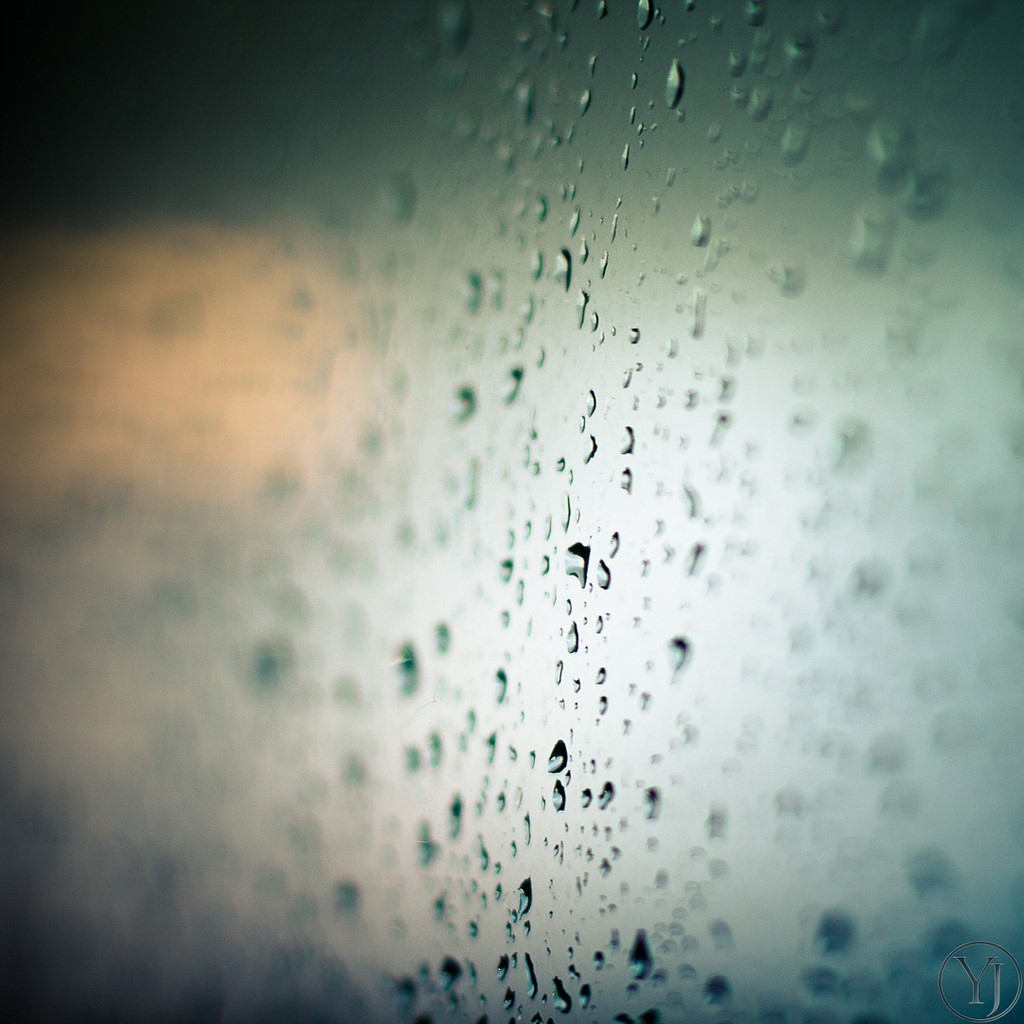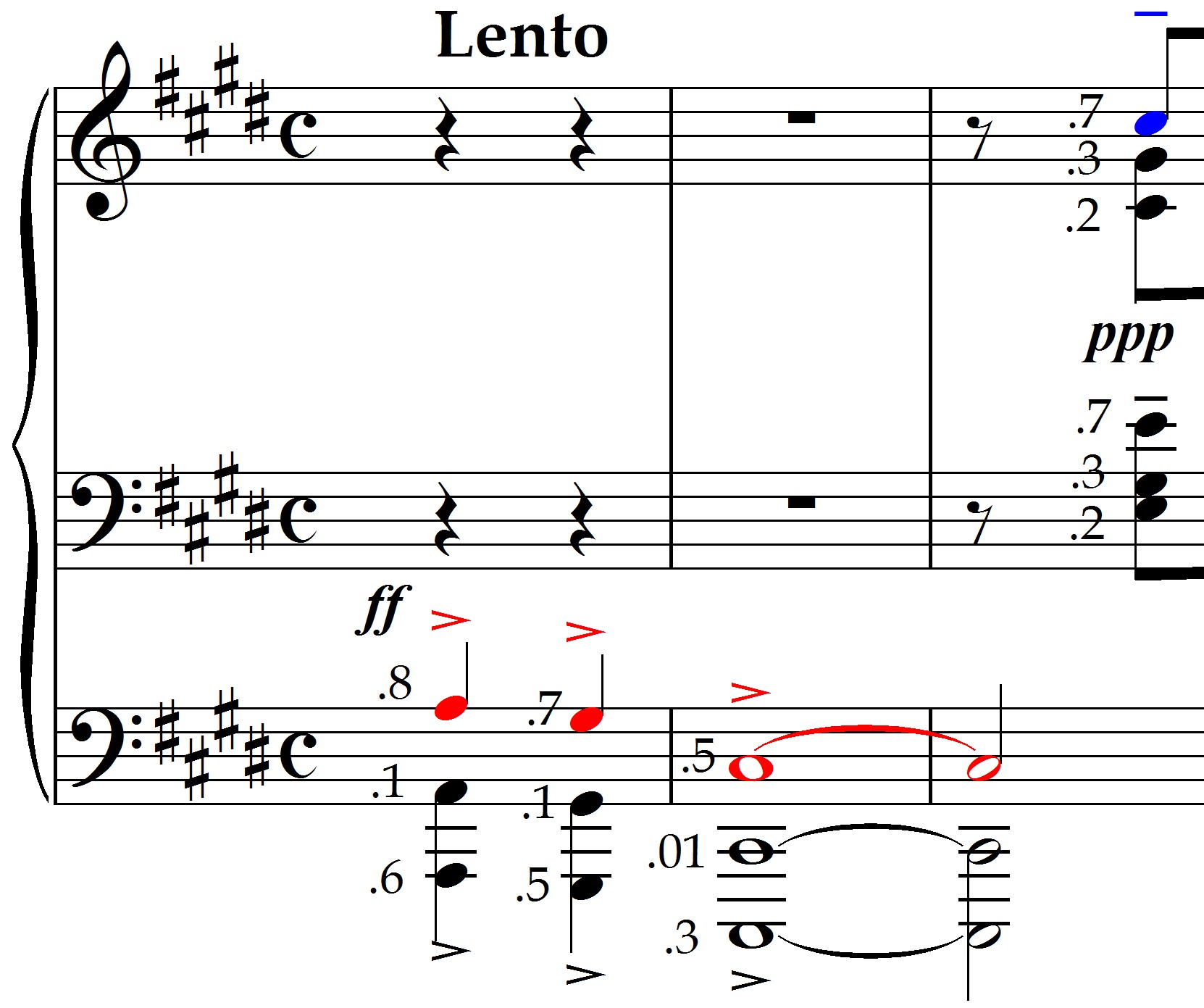Differentiating the Texture of Touches
It really boils down to this: that all life is interrelated.
We are all caught in an inescapable network of mutuality,
tied in a single garment of destiny.
Whatever affects one directly, affects all indirectly.
~ Martin Luther King, Jr.
Talea is a Renaissance term meaning texture or pattern. I use the word talea to define the pattern of touches employed at any given time, based on their length in relationship to their printed note-value. Talea is the sum total of articulation patterns, and is requires the precise definition of the length of each note. For example, a quarter note held the length of a full quarter note has a value of 1.0. A non-legato touch might vary between 0.3 and 0.8, and a legatissimo could measure 1.2, due to overlapping touches. Talea touches can be viewed and organized, again, either vertically or horizontally, and as being dry or wet.
Because of the generally pedaled nature of the piano and the sustaining pedal’s intimate relationship with touch and virtually every aspect of interpretation, talea holds a special place in the technique of piano playing. I refer to talea with minimal or no pedal as dry talea and to pedal-based talea as wet talea.
Dry talea is the earth-bound side of talea and is comparable to the use of articulation on virtually any other instrument. Wind players, perhaps oboists most of all, have a highly developed sense of articulation. They are trained to develop every possible shade of staccato, portato, non legato, legato and legatissimo, so great wind players tickle the ear with constantly varied articulation.
Whenever I play the organ, itself essentially a wind instrument, I’m vividly reminded about how talea affects the listener’s perception of energy. On the organ, provided you leave the stops in place and don’t use the crescendo pedal, the line stays exactly the same volume no matter how hard you press. The fingers can’t vary the air pressure to shape the phrase as they can on the piano by striking with less or greater speed/weight. When I first sit down at the organ, my pianist fingers fight to shape the line at first but gradually adapt to talea-based phrasing. By varying the length of the notes played, you can create the effect of a crescendo or diminuendo, or even of an espressivo. Also, in seemingly complete contradiction to this pseudo crescendo/diminuendo technique, non legato on the organ often sounds louder and more energized than legato or legatissimo, even though longer, more sustained sounds release more accumulated sound. The reason for this is that the clarity of the attack against a slight moment of silence can have the effect of making it seem louder to the listener.
The greatest dry talea artist in the history of 20th pianism was Glenn Gould. One of the greatest Romantics of the keyboard, he channeled his vocal passions into a largely dry, classical articulation-based art-form. In his approach to Bach in particular, he constructed skyscrapers with almost no pedal and a small dynamic range. How did he create the illusion of largeness and expansiveness while using such a small dynamic and interpretive range? The answer lies mainly in his command of rhythmic energy, architecture, and his unprecedented approach to dry talea. He deliberately limited his dynamic scope and use of large crescendos/diminuendos in an attempt to recreate the effect of a harpsichord. Ironically, his playing sounds nothing like the pedal-less but wet and resonant harpsichord, but it sounds like no other piano-playing either! He lifted rhythmic inertia and talea to the fore with a finger-based technique employing 100 shades of staccato and non-legato.
To briefly describe it, under Gould’s fingers, every line has its own inner life defined largely by the articulation. And each vertical moment is calculated to maximum effect to show varying lengths of touch. He uses talea structurally, both vertically and horizontally to maximum effect and in perfect balance. This effect becomes pure substance and begins to define form and architecture. He redefines the way you perceive music and form. Pure genius! Oddly, when Gould moves into repertoire that demands command of the pedal, the genius quickly fades. {see post on Gould in Part III}
Wet talea is indigenous to the piano and often has mystifying qualities. How is it that you can tell, even when the pedal is fully depressed, how long a note is held in the finger? Once you release a note to the pedal, it shouldn’t matter any more whether the finger actually holds the note down or not. But it does! Could it have something to do with the proximity of the hammer to the vibrating strings? Unlikely. Or simply with following through? It’s a mystery – the piano seems to sense your intentions and reveal even what should logically remain hidden. A well-known NY piano technician said it best – The more I get to know the intricacies of the mechanics of the piano, the more mysterious it becomes.
The greatest wet talea artist of the 20th century was Vladimir Horowitz. And this in spite of his avoidance of a real finger-legato. What a paradox! Horowitz’ technique is based almost exclusively on a non-legato approach (and by this I mean every shade from staccatissimo to near-legato), inside the pedal and out (and every shade of wetness in between), to create the most orchestral sound in recorded history.
The traditional terms for articulation don’t seem to suffice – staccatissimo, staccato, portato, portamento, tenuto, non legato, legato, legatissimo, etc. Besides being often imprecise and having overlapping meanings, they are too few. Staccato generally mean anything from about 10% of the actual note value to around 85%. That’s an enormous range! Even non legato can mean anything from around 50% to 99%. And legatissimo can mean anything from 101% to 1000% and beyond! As an interpreter seeking definition of intent, wouldn’t it be more logical and more precise to apply raw percentages to designate length of attack? -– this note .5, this passage .8, these notes .1, this note 1.3, etc. This is how I often notate articulation in my score. It’s extremely efficient and helps heighten my awareness to the limitless possibilities of articulation and its uses in defining talea.
Let’s return to our Prelude and look at a few examples of how this works. Let’s look first at the blue line alone and experiment with varying possibilities:
Try playing this through several times until you can approximate the relative note-lengths. Can you hear the color and the emphasis change as you alter the talea?
Now turn your attention to the vertical:
Try coming to terms with these talea decimals. Don’t worry at first about being absolutely precise, but listen to the orchestral colors that result by simply altering the length of the attacks. Experiment writing in your own decimals for the entire excerpt, as well as in other repertoire, and take in the resulting colors. What I find particularly interesting when I apply talea vertically is that the notes that I let ring out into the pedal (such as the .1 thumb in the lh above) not only offer striking, contrasting colors, they free the hand up of unnecessary tension.
We will examine Dry Talea further in Part IV, as well as in the following post.



